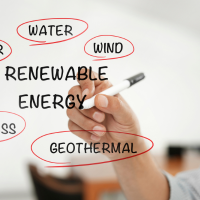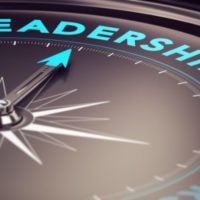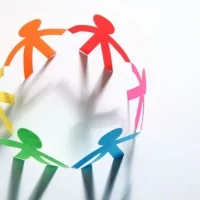High-net-worth individuals (HNWIs) are often characterized by their significant financial resources, which can be leveraged for philanthropic endeavors. Understanding their motivations, interests, and values is crucial for NGOs seeking to engage them in meaningful ways. Many HNWIs are driven by a desire to make a difference in the world, often influenced by personal experiences or a passion for specific causes.
This intrinsic motivation can be a powerful tool for NGOs, as it allows organizations to align their missions with the personal values of potential donors. Moreover, HNWIs often seek to leave a legacy that reflects their beliefs and aspirations. They may be interested in funding initiatives that not only provide immediate benefits but also create long-term change.
This perspective can lead to more substantial donations, as these individuals are often willing to invest in projects that resonate with their vision for a better future. By understanding the unique characteristics and motivations of HNWIs, NGOs can tailor their outreach strategies to effectively engage these potential supporters.
Building a Strong Case for Education Donations
The Power of Education in Driving Social Change
To attract donations from high-net-worth individuals (HNWIs), non-governmental organizations (NGOs) must present a compelling case for why education is a worthy investment. Education is not just a fundamental human right; it is also a powerful tool for social change and economic development. By emphasizing the transformative impact of education on individuals and communities, NGOs can create a narrative that resonates with potential donors.
Sharing Success Stories and Highlighting Broader Benefits
For instance, sharing success stories of students who have overcome adversity through educational opportunities can illustrate the profound difference that financial support can make. Additionally, NGOs should highlight the broader societal benefits of investing in education. Research consistently shows that education leads to improved health outcomes, reduced crime rates, and increased economic productivity.
Framing Education as a Catalyst for Positive Change
By framing education as a catalyst for positive change, organizations can appeal to HNWIs’ desire to contribute to solutions that address systemic issues. Providing data and statistics that demonstrate the return on investment in education can further strengthen the case for donations.
Leveraging Personal Connections and Networks
Building relationships with HNWIs often requires leveraging existing personal connections and networks. Many successful fundraising efforts stem from introductions made through mutual acquaintances or shared interests. NGOs should actively seek opportunities to connect with potential donors through networking events, conferences, and community gatherings.
Engaging with individuals who already have a vested interest in education can lead to fruitful conversations and potential partnerships. Moreover, utilizing social media platforms and professional networks like LinkedIn can help NGOs identify and connect with HNWIs who share similar values. By engaging with these individuals online, organizations can foster relationships that may eventually lead to financial support.
It’s essential to approach these connections authentically, focusing on building genuine relationships rather than solely seeking donations. When HNWIs feel valued and understood, they are more likely to consider supporting an organization’s mission.
Creating Tailored and Personalized Proposals
One-size-fits-all proposals are unlikely to resonate with HNWIs who are accustomed to personalized experiences in their professional and philanthropic endeavors. NGOs should invest time in researching potential donors to understand their interests, philanthropic history, and preferred causes. This information can be used to craft tailored proposals that speak directly to the donor’s passions and priorities.
A personalized proposal should not only outline the specific project or initiative but also demonstrate how it aligns with the donor’s values and goals. For example, if a donor has previously supported STEM education initiatives, an NGO could propose a project focused on enhancing science and technology programs in underserved schools. By making the proposal relevant and specific, organizations can significantly increase their chances of securing funding.
Highlighting the Impact and Benefits of Education Donations
When approaching HNWIs for donations, it is essential to clearly articulate the impact their contributions will have on education initiatives. This involves not only outlining the immediate benefits but also illustrating the long-term effects of their support. For instance, an NGO could present data showing how increased funding for scholarships leads to higher graduation rates and improved career outcomes for students.
Additionally, sharing testimonials from beneficiaries can provide powerful evidence of the positive impact of donations. Personal stories from students who have benefited from educational programs can evoke emotional responses and create a sense of connection between the donor and the cause. By effectively communicating the tangible benefits of education donations, NGOs can inspire HNWIs to take action and contribute to meaningful change.
Engaging in Long-Term Relationship Building
Priority on Long-term Engagement
NGOs must prioritize long-term engagement strategies that foster trust and loyalty among donors. This involves regular communication, keeping donors informed about project developments, successes, and challenges.
Transparency and Credibility
Transparency is key in building credibility and demonstrating that donations are being used effectively. By keeping donors informed, organizations can showcase the impact of their contributions, thereby strengthening their relationship.
Personal Investment and Ownership
Involving donors in organizational activities can deepen their connection to the cause. This can be achieved by inviting them to events, providing opportunities for site visits, or involving them in decision-making processes. When HNWIs feel personally invested in an organization’s mission, they are more likely to continue their support over time.
Demonstrating Transparency and Accountability
Transparency and accountability are critical components of building trust with HNWIs. Donors want assurance that their contributions will be used responsibly and effectively. NGOs should provide clear financial reports detailing how funds are allocated and the outcomes achieved as a result of donations.
This level of transparency not only reassures donors but also enhances the organization’s credibility in the eyes of potential supporters. Additionally, establishing mechanisms for accountability—such as regular updates on project progress or third-party evaluations—can further strengthen trust between NGOs and HNWIs. By demonstrating a commitment to responsible stewardship of funds, organizations can foster long-lasting relationships with donors who value integrity and transparency in their philanthropic endeavors.
Showing Appreciation and Recognition for Education Donations
Finally, expressing gratitude is essential in cultivating positive relationships with HNWIs who support educational initiatives. Acknowledging their contributions through personalized thank-you notes, public recognition at events, or featuring them in newsletters can go a long way in making donors feel valued. Such gestures not only reinforce their commitment but also encourage continued support.
Moreover, NGOs should consider creating opportunities for donors to engage with beneficiaries directly. Organizing events where donors can meet students or educators impacted by their contributions allows them to see firsthand the difference they are making. This personal connection can enhance their sense of fulfillment and motivate them to continue supporting educational initiatives.
In conclusion, engaging high-net-worth individuals in education philanthropy requires a strategic approach that emphasizes understanding their motivations, building strong cases for support, leveraging networks, creating personalized proposals, highlighting impact, fostering long-term relationships, demonstrating transparency, and showing appreciation. By implementing these strategies, NGOs can effectively connect with HNWIs and inspire them to invest in transformative educational initiatives that create lasting change in communities around the world.








































